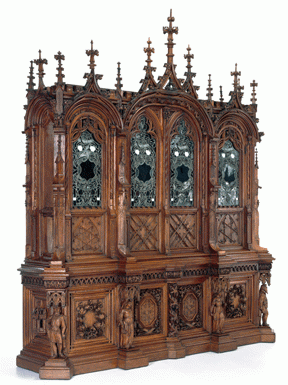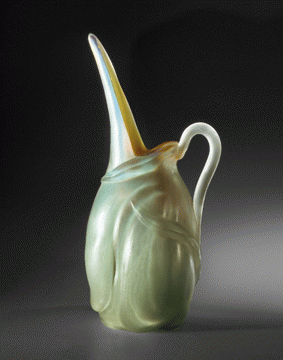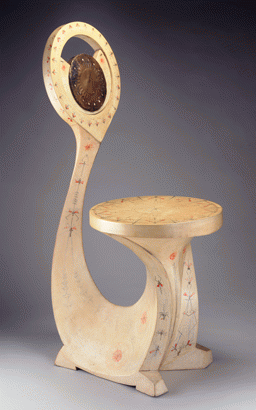MAB: What inspired this exhibition, and how long did it take to develop?
CLF: I was inspired by two things: The excitement of the two world's fairs that I had attended as a child where millions of people gathered to see new inventions, buildings and ideas.
In my curatorial career, I realized that world's fairs were where manufacturers, designers and countries debuted their very best new products with innovations in materials, processes and styles.
As world's fairs were about competition (both international and national) manufacturers displayed their highest achievements to garner the most press and attention.
The fairs were also where people and ideas from all over the world came together--so there was a wonderful exchange of ideas from around the globe, influencing objects and the way people lived. Although world's fairs had machinery and even fine arts, there had never been an exhibition that focused on the decorative arts (furniture, metalwork, glass, ceramics and textiles, etc.) before. The topic, although huge, seemed perfect for a major exhibition.

Gustave Herter, Amer. Ernst Plassmann, woodworker, Amer. Bookcase 1852-58.
(Image by Nelson-Atkins Museum) Details DMCA
MAB: Which is your favorite piece?
CLF: Every day I have a new favorite piece in the exhibition because there is such variety. Today it is the small larkspur glass pitcher by the French glass manufacturer Daum Freres that was acquired by the Designmuseum in Copenhagen from the Paris Exposition Universelle of 1900.

Ernest Bussiere, Designer, French. Daum Freres, mfr. Pitcher, ca. 1900.
(Image by Designmuseum Danmark, Copenhagen) Details DMCA
The pitcher is made of two layers of glass, pale pink under pale blue, that have been carved and polished to give a halo of pink and a softness that suggests petals. The design is both inspired directly from nature but also from Japanese art, indicating the strong influence of Asian art of the period. The pitcher is an intimate piece that calls out to be handled and admired.
It is also one of over 200 pieces of French art that the museum in Copenhagen acquired from the fair, showing the importance of expositions for design museums, for the general public but also students and manufacturers of design. All of this is embodied in one small, perfect object.
MAB: What is it that you hope visitors will take away with them?
CLF: I hope that visitors to the exhibition and readers of the catalogue will be amazed at the beauty, variety and expert craftsmanship of the works of art that were shown at the fairs.
I also hope they capture some of the excitement of seeing these extraordinary works--just like it would have felt going to the fairs.

Carlo Bugatti, Italian. Cobra Chair, 1902.
(Image by Carnegie Museum of Art, Pittsburgh) Details DMCA
Next Page 1 | 2 | 3 | 4 | 5 | 6 | 7 | 8
(Note: You can view every article as one long page if you sign up as an Advocate Member, or higher).






